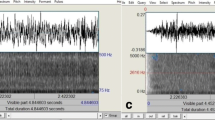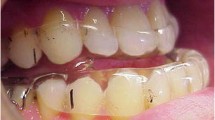Abstract
Twenty-one patients were examined, of whom 18 suffered from obstructive sleep apnea syndrome and 3 were heavy snorers. The diagnosis was established by a combination of medical history, clinical examination and standard nocturnal polysomnography. Five pressure transducers were used in the pharynx and one in the esophagus, in addition to monitors for oxygen saturation and oro-nasal airflow. A clinically significant obstruction was defined as occurring when the pressure difference between two transducers was higher than 50% of the more caudal of the two pressures. In the 20 patients having obstructions during sleep, 7 had obstruction in only one segment of the airway, 9 in two segments and 4 in three segments. All but 2 patients had obstructions in the velopharyngeal region. Since the effect of uvulopalatopharyngoplasty (UPPP) is best during the first few months after surgery, 10 patients were re-examined after only 3 months in order to record optimal results sequentially. Of these, 6 still had obstructions involving the velopalatine segments and only 4 had none. This may explain why UPPP has a success rate of only 50–70% in most publications, depending on the definitions of success.
Similar content being viewed by others
References
Anand VK, Ferguson PW, Schoen S (1991) Obstructive sleep apnea: a comparison of continuous positive airway pressure and surgical treatment. Otolaryngol Head Neck Surg 105:382–390
Chambers GW, Birkenmeier N, Walsh JK (1986) Nasal continuous positive airway pressure and home compliance. Sleep Res 16:112
Fujita S, Conway W, Zorick F, Roth T (1981) Surgical correction of anatomic abnormalities in obstructive sleep apnea syndrome: uvulopalatopharyngoplasty. Otolaryngol Head Neck Surg 89:923–927
Fujita S, Conway WA, Zorick FJ, et al (1985) Evaluation of the effectiveness of uvulopalatopharyngoplasty. Laryngoscope 95: 70–74
Hoffstein V, Viner S, Mateika S, Convay J (1992) Treatment of obstructive sleep apnea with nasal continuous positive airway pressure. Patient compliance, perception of benefits, and side effects. Am Rev Respir Dis 145:841–845
Katsantonis GP, Moss K, Miyazaki S, Walsh J (1993) Determining the site of airway collapse in obstructive sleep apnea with airway pressure monitoring. Laryngoscope 103:1126–1131
Kribbs NB, Pack AI, Kline LR, Smith PL, Schwartz AR, Scubert NM, Redline S, Henry JN, Getsy JE, Dinges DF (1993) Objective measurement of patterns of nasal use by patients with obstructive sleep apnea. Am Rev Respir Dis 147:887–895
Larsson H, Carlsson-Nordlander B, Svanborg E (1991) Longtime follow up after UPPP for obstructive sleep apnea syndrome. Acta Otolaryngol (Stockh) 111:582–590
Riley RW, Powell NB, Guilleminault C, Nino-Murcia G(1986) Maxillary, mandibular, and hyoid advancement: an alternative to tracheostomy in obstructive sleep apnea syndrome. Otolaryngol Head Neck Surg 94:584–588
Skatvedt O (1992) Continuous pressure measurements in the pharynx and esophagus during sleep in patients with obstructive sleep apnea syndrome. Laryngoscope 102:1275–1280
Skatvedt O (1993) Localization of site of obstruction in snorers and patients with obstructive sleep apnea syndrome: a comparison of fiberoptic nasopharyngoscopy and pressure measurements. Acta Otolaryngol (Stockh) 113:206–209
Sullivan CE, Berton-Jones M, Issa FG, Eves L (1981) Reversal of obstructive sleep apnea by continuous positive airway pressure applied through the nares. Lancet 1:862–865
Sullivan CE, Grunstein RG (1989) Continuous positive airway pressure in sleep-disordered breathing. In: Kryger MH, Roth T, Dement WC (eds) Principles and practice of sleep medicine. Saunders, Philadelphia, p 559
Author information
Authors and Affiliations
Rights and permissions
About this article
Cite this article
Skatvedt, O. Continuous pressure measurements during sleep to localize obstructions in the upper airways in heavy snorers and patients with obstructive sleep apnea syndrome. Eur Arch Otorhinolaryngol 252, 11–14 (1995). https://doi.org/10.1007/BF00171432
Received:
Accepted:
Issue Date:
DOI: https://doi.org/10.1007/BF00171432




